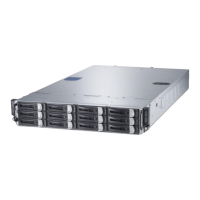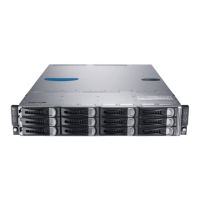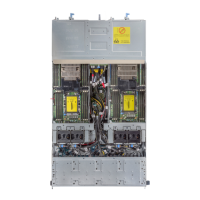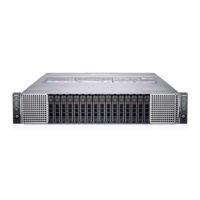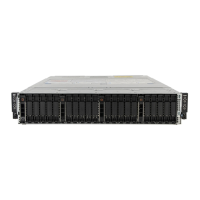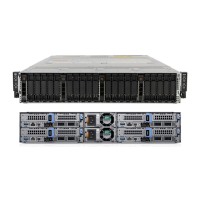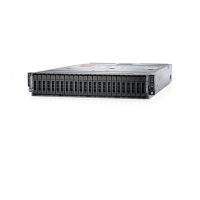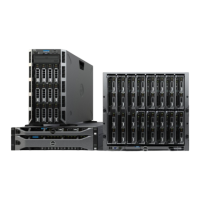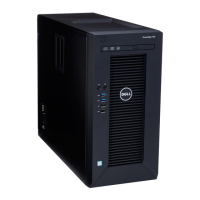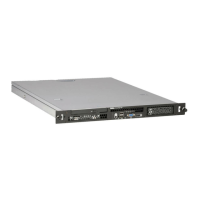Using the System Setup Program Page: 58 Start Menu Introduces the System Setup program and its basic functions.
Boot Manager Explains how to access and use the Boot Manager to select boot devices.
Console Redirection Describes the console redirection feature for remote diagnosis and problem-solving.
BMC Serial Over LAN Explains Serial Over LAN (SOL) setup for Dedicated-NIC and Shared-NIC modes.
Main Menu Displays information about system boards and BIOS in the main menu.
Advanced Menu Provides advanced system information and configuration options.
Power Management Configures system power management settings like OS control and energy efficiency.
CPU Configuration Allows configuration of CPU settings such as core count, frequency, and virtualization.
SATA Configuration Allows configuration of SATA controllers, link rates, and power saving features.
PCI Configuration Configures PCI-E slot settings, embedded network devices, and I/O acceleration.
ISCSI Remote Boot Configures iSCSI initiator name, DHCP, IP address, and target information.
Security Menu Sets security parameters including supervisor and user passwords.
Server Menu Configures server parameters such as BMC status, IPMI, and remote access.
Boot Menu Sets POST boot parameters like quiet boot, pause on errors, and boot mode.
Exit Menu Provides options for saving or discarding changes and exiting the setup utility.
Installing System Components Page: 130 Safety Instructions Provides critical safety warnings and guidelines for working with system components.
Recommended Tools Lists the recommended tools required for installing system components.
Inside the System Illustrates the internal layout of the system with 1U and 2U node examples.
Hard Drives Details procedures for removing and installing 3.5-inch and 2.5-inch hard drive blanks.
Power Supplies Provides a matrix of supported configurations for power supplies and system boards.
System-Board Assembly Describes procedures for removing and installing system-board blank trays and assemblies.
Air Baffle Details the removal and installation procedures for system air baffles.
Heat Sinks Provides instructions for removing and installing processor heat sinks.
Processors Explains how to remove and install processors, including handling precautions.
Raid Card Summarizes LSI RAID cards, including removal, installation, and cable plans.
LSI 9265-8 i Card Provides instructions for removing and installing the LSI 9265-8i card for 1U and 2U nodes.
Riser card Describes optional riser cards and their installation procedures for 1U and 2U nodes.
System Memory Details memory slot features and supported memory module configurations.
System Battery Explains how to replace the system battery, including safety precautions.
System Board Provides instructions for removing and installing the system board.
Cooling Fans Details procedures for removing and installing cooling fans and fan cages.
Middle Planes Covers removal and installation of middle planes, including brackets and cable routing.
Direct Backplanes Explains the procedure for removing and installing direct backplanes for hard drives.
Front Panels Provides instructions for removing and installing front panel assemblies and panels.
Sensor Boards Covers removal and installation of sensor boards for 3.5-inch and 2.5-inch systems.
Getting Help Provides information on how to contact Dell for support and service.
Using the System Setup Program Page: 58 Start Menu Introduces the System Setup program and its basic functions.
Boot Manager Explains how to access and use the Boot Manager to select boot devices.
Console Redirection Describes the console redirection feature for remote diagnosis and problem-solving.
BMC Serial Over LAN Explains Serial Over LAN (SOL) setup for Dedicated-NIC and Shared-NIC modes.
Main Menu Displays information about system boards and BIOS in the main menu.
Advanced Menu Provides advanced system information and configuration options.
Power Management Configures system power management settings like OS control and energy efficiency.
CPU Configuration Allows configuration of CPU settings such as core count, frequency, and virtualization.
SATA Configuration Allows configuration of SATA controllers, link rates, and power saving features.
PCI Configuration Configures PCI-E slot settings, embedded network devices, and I/O acceleration.
ISCSI Remote Boot Configures iSCSI initiator name, DHCP, IP address, and target information.
Security Menu Sets security parameters including supervisor and user passwords.
Server Menu Configures server parameters such as BMC status, IPMI, and remote access.
Boot Menu Sets POST boot parameters like quiet boot, pause on errors, and boot mode.
Exit Menu Provides options for saving or discarding changes and exiting the setup utility.
Installing System Components Page: 130 Safety Instructions Provides critical safety warnings and guidelines for working with system components.
Recommended Tools Lists the recommended tools required for installing system components.
Inside the System Illustrates the internal layout of the system with 1U and 2U node examples.
Hard Drives Details procedures for removing and installing 3.5-inch and 2.5-inch hard drive blanks.
Power Supplies Provides a matrix of supported configurations for power supplies and system boards.
System-Board Assembly Describes procedures for removing and installing system-board blank trays and assemblies.
Air Baffle Details the removal and installation procedures for system air baffles.
Heat Sinks Provides instructions for removing and installing processor heat sinks.
Processors Explains how to remove and install processors, including handling precautions.
Raid Card Summarizes LSI RAID cards, including removal, installation, and cable plans.
LSI 9265-8 i Card Provides instructions for removing and installing the LSI 9265-8i card for 1U and 2U nodes.
Riser card Describes optional riser cards and their installation procedures for 1U and 2U nodes.
System Memory Details memory slot features and supported memory module configurations.
System Battery Explains how to replace the system battery, including safety precautions.
System Board Provides instructions for removing and installing the system board.
Cooling Fans Details procedures for removing and installing cooling fans and fan cages.
Middle Planes Covers removal and installation of middle planes, including brackets and cable routing.
Direct Backplanes Explains the procedure for removing and installing direct backplanes for hard drives.
Front Panels Provides instructions for removing and installing front panel assemblies and panels.
Sensor Boards Covers removal and installation of sensor boards for 3.5-inch and 2.5-inch systems.
Getting Help Provides information on how to contact Dell for support and service.







